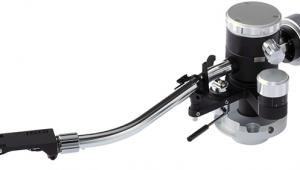A New Nervous System

This past winter I visited a new audio dealer, a fellow I'll call 'Colin'. He's a high-end hobbyist working from his home - a time-honoured practice and an increasingly prevalent one in the Internet age. His large demo room was festooned with recent examples of quality gear from multiple brands, but most conspicuous were the many brightly coloured cables connecting them - the work, he said, of a friend who had spent years researching the behaviours of such cables.
Body Language
Like others before him, his friend had come to the conclusion that everything we thought we knew was wrong. Upon entering the room, I listened to a well-rehearsed speech comparing cabling to the human body's nervous system - a presentation similar to those given by professional talking heads at Consumer Electronics Show demonstrations, where they seem to know what they are talking about until a journalist asks a question they can't answer. That's when company executives step in to manage the conversation.
Colin was adamant that previous theories about what is most important in audio systems were misguided at best - ideas such as the importance of the room layout, the amplification, the source devices or source recordings, or the loudspeakers, of course.
I listened politely to his 15-minute spiel. When he stopped to take a breath, I gestured toward a huge power cord stretched out like a shimmering python atop some little ceramic trestles. 'You know that's a passive device, don't you?' I said. 'It can't do anything but act as a filter'. 'Oh, no, you're wrong', he countered. 'It has voltage and current. Therefore, it's an active device.'
Colin's insistence about his cabling's sonic revelations fell into line with many other such admonitions that have been issued repeatedly by audio designers and manufacturers over the years - strongly worded and sometimes relatively well-reasoned defences of inventions claimed capable of lifting sonic veils.
Such arguments contain grains of truth but are also far from encompassing the whole truth. No one with experience in this field would deny the importance of speakers, amps, sources, etc, but in my opinion, the most insurmountable factor in a hi-fi system is the acoustic character of the room in which the system resides.
I have some doubts about the ability of 'room correction' technology to overcome fundamental acoustic problems, especially of overly reverberant spaces. Despite all the impressive tools used in such technologies, ultimately the decision about what sounds best is a personal subjective opinion.
Heresy perhaps, but I don't think that multichannel technologies such as Dolby Atmos have done anything to advance the state of music reproduction. Atmos has certainly improved what film industry sound designers call 'object-based audio' - the placement of virtual objects in the soundfield - but does it contribute to an immersive, emotionally engaging experience of two-channel audio? Has anyone ever walked away from an Atmos demo saying 'Wow. That was beautiful'?
Keep It Real
For me, great sound is achievable only through synergy - optimising the room's acoustics and furnishings, then fitting that room with the most appropriate equipment. This means not trying to shoe-horn giant loudspeakers into a small cottage, and not trying to fill an auditorium with a pair of pipsqueak mini-monitors backed by single-ended triodes.
Audio people should not try to bend reality to fit their assumptions. You may honestly believe that signal-processing, amplifier topology, or freshly configured loudspeakers take audio reproduction into a new dimension - or like Colin, that 'a new nervous system' is the cure.
For me, the bottom line with all art - music, film, theatre, painting, sculpture - is emotional resonance. If technology enables that, it's wonderful. If not, then it has no use. Real-world circumstances demand real-world solutions.



















































